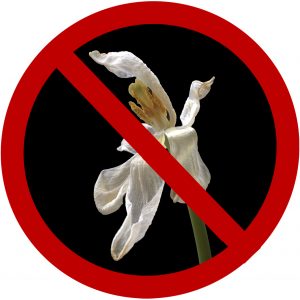The ever-growing glossary of digital marketing terminology has one entry that rears its ugly head far more often than it should: Native Advertising
What is native advertising?
Noun:
1. articles that resemble editorial content in digital/online publications, but are actually paid for by advertisers and intended to promote their products and/or services.
2. native advertising may be on the rise, but most people can still tell ads from stories.
Synonyms: advertorial, sponsored posts, paid media
Antonyms: content marketing, inbound marketing, earned media
Essentially, native ads are paid-for content placements that sit alongside other, routine articles, in many ways disguised to appear as if they form part of the natural commentary of the publication.
For example, a skincare company may wish to promote their range of lotions and potions, by approaching a popular lifestyle magazine site with an offer to pay for placing an article along the lines of ‘Winter Skincare: Dos and Don’ts’.
They can then write a feature which, on the face of it, offers practical, helpful advice, but when you dig a little deeper, you realise its actually littered with self promotional references to their own products and links to their site.
The most obvious attraction for using such a tactic is to extend their reach amongst a highly targeted audience, while also benefiting from the positive PR aspect of “Hey guys, look at us! We’ve been featured in [insert industry-leading publication of choice here.]”
Are Native Ads a dangerous game?
In short, yes. For one, consumers distrust advertorials. More often than not, native advertising sticks out like a sore thumb, so if you go down this route, your brand risks losing credibility.
Furthermore, there’s the murky issue of SEO manipulation, which could severely damage your website’s authority and wipe out your search engine rankings.
Those with a working knowledge of offsite SEO and link-building will understand the potential advantages that come with high-quality, relevant websites linking back to your own site from within editorial content – giving you a healthy boost in the rankings as some of the publisher’s authority passes onto you.
In essence, search engine bots regard such links as a form of recommendation, so when a reputable website links to you and, thus, “recommends” you, your website will in turn be given favour in organic search results. In simple terms, the more links you have from authoritative websites, the higher you’ll rank.
As such, paying for native advertising may seem appealing, as you can effectively buy your way into top-level publications, framing your brand as a market leader, while also enhancing your search engine performance. Win-win, right?
No. Google’s rules on link schemes are very clear, stating:
Creating links that weren’t editorially placed or vouched for by the site’s owner on a page, otherwise known as unnatural links, can be considered a violation of our guidelines. Here are a few common examples of unnatural links that may violate our guidelines:
- Text advertisements that pass PageRank
- Advertorials or native advertising where payment is received for articles that include links that pass PageRank
- Links with optimized anchor text in articles or press releases distributed on other sites. For example: There are many wedding rings on the market. If you want to have a wedding, you will have to pick the best ring. You will also need to buy flowers and a wedding dress.
So, if you’re toying with the idea of purchasing a native ad, don’t do so thinking it will have a positive impact on your SEO efforts. To negate any damage, you should insist that any links placed within your content contain a rel=”nofollow” attribute in the <a> tag, which tells search engines to discount the link value and not pass on any authority from the publishing site.
This evasive action will ensure the integrity of your site is maintained in the eye’s of Google, as there’s no way you’ll possibly benefit from any perceived manipulation or bending of their Webmaster Guidelines. Here’s Google’s Matt Cutts discussing the issue:
Although there’s theoretically no SEO value to “nofollow” links, you’ll still be benefiting from a PR viewpoint and the potential of people clicking-through to become customers. So, “nofollow” actively tells Google that you’re not trying to exploit the search results (which they hate), but indicates you are paying for PR (which they’re not fussed about).
Additionally, it’s best practice for all sponsored content to be clearly marked as such, notifying readers that the material has been paid for and does not form part of the publisher’s editorial content. Failing to make this clear is misleading and could potentially cause legal headaches if people complain.
Google doesn’t have anything against native advertising, per se, and regularly ranks native ads highly if the content within is relevant to specific search queries. However, you must follow the rules and not use any trickery to influence organic search results.
The Interflora furore
 The classic, oft-cited example of rogue native advertising comes in the form of flowers that caused a stink. Interflora had paid newspapers and bloggers to publish advertorials in the run up to Valentine’s Day, containing links with keyword-rich anchor text such as “send flowers” and “flower delivery”.
The classic, oft-cited example of rogue native advertising comes in the form of flowers that caused a stink. Interflora had paid newspapers and bloggers to publish advertorials in the run up to Valentine’s Day, containing links with keyword-rich anchor text such as “send flowers” and “flower delivery”.
Their rankings for the designated search terms blossomed overnight, but when Google clocked what was going on they issued severe penalties, discrediting the website and resulting in Interflora no longer even ranking for the term “Interflora”.
The posts were not obviously marked as having been paid for, and they all contained “follow” links; it was clear that the florist was trying to manipulate the search results and unnaturally enhance their presence in the build up to a busy trading period, but Google cottoned on and the company’s presence duly wilted.
Let this be a warning to anyone not playing by the rules. The fact that Interflora had also spent bucketloads on AdWords (Google’s pay-per-click platform) didn’t make them immune to punishment for trying to trick the organic search results, and the high-profile news websites selling “follow” advertorial links were also hit hard.
It doesn’t matter who you are or how much clout you carry, if you break the rules your website is doomed to wilt in the shade until you resolve the issue and restore Google’s faith in your good intentions. Read our guide to recovering from manual and algorithmic penalties to understand more about this process.
Quality content marketing shines through
The old adage, “a slow and steady pace wins the race” rings true when discussing successful online marketing campaigns, although “consistent” is probably preferable to “slow”.
Again, Google’s ‘link schemes’ notice states:
The best way to get other sites to create high-quality, relevant links to yours is to create unique, relevant content that can naturally gain popularity in the Internet community. Creating good content pays off: Links are usually editorial votes given by choice, and the more useful content you have, the greater the chances someone else will find that content valuable to their readers and link to it.
Thus, if you’re looking to naturally boost your web presence rather than cheat the system, it’s highly advisable to invest in quality content creation, taking time to build captivating resources that other Internet users will find either helpful, informative or entertaining – encouraging backlinks to occur naturally.
That doesn’t mean to say you’re limited to only posting material on your own site, as outreach is one of the fundamental building blocks of any successful content marketing strategy.
Ultimately, the aim of the game is to achieve relevant links to your site without having to pay for them and risking penalties. Relevance is the key word here; there’s no point in an Internet marketing magazine publishing an article about winter skincare advice, because it’s not relevant to their core content.
Think about links
The best way to achieve high-quality links is to create quality content or conduct and publish independent research that offers unique insight, adding genuine value to the wider conversation. Publishing outstanding material on your website that naturally attracts reference links, i.e. people citing your work when producing their own content.
These links are commonly referred to as “earned media”, because you’ve earned the right to be linked to, and, as such, search engines give more weighting to them. Your work is so good that others are naturally linking to you, which indicates your website must be of a high-quality, meaning you’ll be rewarded with higher search rankings.
You should also research high-quality websites in your niche, those frequented by your peers and/or target customers, and look to engage with their editorial teams, offering to provide non-advertorial guest articles that detail expert opinion and actionable advice in the form of interviews, Q&A’s or content contribution of some form.
The benefit to the publisher is receiving unique insight from an industry expert, something valuable that their audience will appreciate. The benefit to you is hopefully an authoritative citation link, either in the author bio if you are a contributor or, preferably, within the body text. However, in order to naturally link back to your site within guest articles, you’ll have to first produce link-worthy, non-advertorial content on your own site, such as a regularly-updated, informative blog.
For example, the skincare company might publish their ‘Winter Skincare Tips’ article on a website focusing on fashion and beauty, and one of their tips might reference a more detailed guide (published on their own site) to applying moisturiser, which can then be naturally linked to without it coming across as “salesy”.
Quick fixes or long-term gains?
Native advertising gets you noticed in mainstream publications, but it’s pricey, and there are no long-term SEO benefits. Additionally, the more reputable publications, such as newspaper websites, don’t generally publish native ads on their main pages – they’re tucked away in separate ‘sponsored content’ sections, which limits your potential visibility.
It’s also worth noting that many publications remove native ads after a set time period, usually 12 months. Thus, you’re effectively renting the ad space and, unless you pay to renew it, there’s no long-term benefit.
Content marketing, on the other hand, has also been described as “flywheel marketing”, because it can be slow to begin with but, when executed with complementary onsite and offsite techniques, it quickly gathers pace, momentum and sustainability.
As such, at Bespoke Digital we don’t do native ads. For us, the cons far outweigh the pros. We prefer to focus on comprehensive content marketing campaigns that engage audiences in more meaningful ways.
Investing in sponsored posts on Facebook or LinkedIn, promoting your content and directing audiences to your website can pay dividends, as you can target specific demographics to amplify your efforts to the right people. However, paying for article placements and links simply isn’t worth the risk of upsetting Google and frustrating potential customers when they realise they’re reading an ad rather than impartial advice.
If you’d like further guidance on online marketing activities that work, don’t hesitate to call 0117 230 6010 and book in your free Digital Health Check.
Related Topics:
If you have any comments or questions about this post, or would like to discuss a specific issue with your site, please get in touch using the form below.
And connect with us on social media to stay upto date with our latest news:

